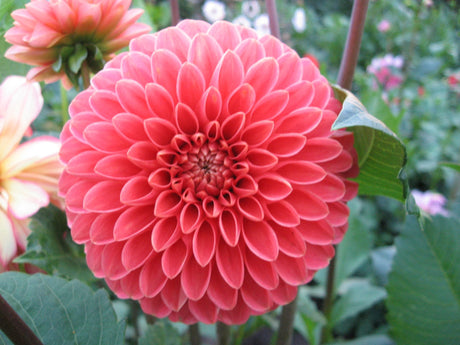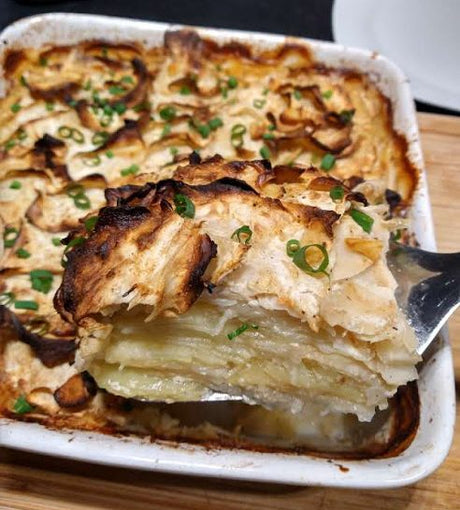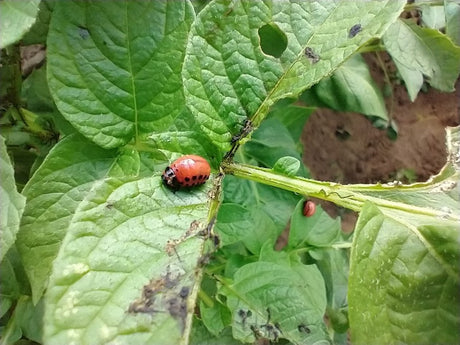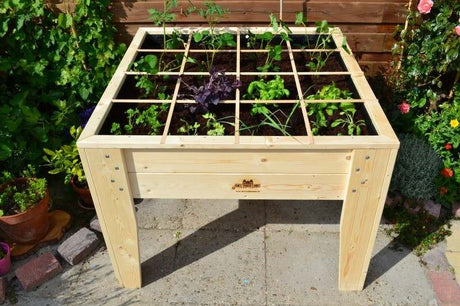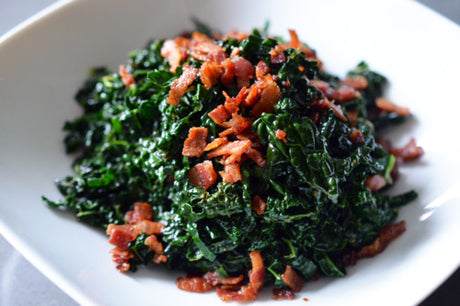Table of Contents:
Onions are one of the most versatile vegetables in the kitchen. They come in various varieties, such as yellow, red, and white onions. The shallot, a related species, belongs to the allium family; shallots are often grown for their aromatic and mild flavor.
Growing your own onions - super versatile vegetable
Onions are perhaps the most versatile vegetable you can grow in your own garden. The great advantage of growing onions is that you can use them almost year-round in the kitchen: raw in a salad, simmered in a stew, or as a flavoring in soups and sauces. Onions are also very healthy. They're low in calories but packed with vitamins B and C, as well as essential minerals. By growing your own onions, you know exactly what you're eating and can enjoy fresh, flavorful onions from your own garden.
There are several types of onions, such as silverskin onions, large yellow onions, and red onions, and there's a wide variety of varieties and uses. From mild to pungent, small silverskin onions to plump storage onions. Gardeners have three options for growing onions: seeding, sowing, and direct sowing in the ground. I even grow them all three ways because... you can never have too many onions.
Location and soil: the basis for strong onions
A good start begins with the right location and soil. Onions love a warm, sunny spot with plenty of sunlight. They need at least 5 to 6 hours of sunlight per day to grow well. The soil should be loose and humus-rich so the roots can develop properly. Keep the soil moist, but avoid overwatering, as this can lead to rot. Dehydration is equally detrimental: soil that is too dry will prevent the onions from growing well.
Also consider the location of your onions: preferably plant them next to root vegetables such as carrots or parsnips.
By choosing the right location wisely and taking the neighbourhood into account, you give your onions the best chance of healthy growth.
During cold periods, you can provide extra protection to onions by keeping them warm with straw or fleece, so that they are not damaged by frost.
Crop rotation and care: healthy and sustainable cultivation
If you want to grow beautiful, healthy onions year after year, it's wise to practice crop rotation. By not planting onions in the same spot every year, but alternating them with other root vegetables like carrots or parsnips, you significantly reduce the risk of nematode and fungal infestation. Nematodes can attack onion roots, causing stunted growth and a poor harvest. By practicing a good rotation in your vegetable garden, you give diseases and pests less opportunity to build up in the soil.
In May, you can give your onions an extra boost by adding a potassium-rich fertilizer. Potassium stimulates bulb formation and ensures your onions grow firm and healthy. Be careful not to use too much fertilizer, as too much can actually cause problems. By following these care tips and paying close attention to crop rotation, location, and moisture, you can enjoy a healthy and sustainable onion crop in your own garden year after year.
The right onion at the right time: my 4 favorite crops

When growing onions, you need to think carefully about when you want to grow which onions. In spring, for example, we eat many more salads than soup. So spring onions will be more interesting here than plump storage onions, which, with their strong flavor, can enhance a large bowl of soup. Before I discuss the different ways to grow onions, I'll chronologically review the four onion crops I want to grow throughout the year:
- Sowing onions: This is a traditional method where you sow onion seeds directly into the ground. With sowing, it usually takes two years before you can harvest an onion.
- Planting onions: Planting onions is a quick and easy way to grow large onions, as you plant small onions directly in the ground, and they quickly develop into mature onions. Onions can be harvested the same year, while sowing requires a year of patience.
- Winter onions: These are planted in the autumn and can be harvested in early spring.
- Spring onion: Specially grown for its young, green foliage, which is used in salads.
Cultivation 1: Spring onion and under glass for harvest from May
Early Spring Onion for salads, soup garnish, to accompany the first peas, and to flavor all my dishes. From May onward, we use Spring Onions every day. February 10: I sow 6 to 8 Spring Onion seeds in a tray with 4 to 4.5 cm holes, which I keep indoors under grow lights. At the end of March, I plant the modules out in my polytunnel. I want Spring Onion to grow quickly, so I force them indoors with grow lights. You can also do the same thing in a greenhouse or conservatory, but it will take a bit longer.

Crop 2: Summer onions from seed potatoes for a rich harvest for storage
March 30th: I start my summer onion seed crop. Because I can use spring onions early in the kitchen, I'm taking my time with my summer onion set crop. Without spring onions, I would also root them in trays to save some time. Since I have spring onions under plastic or glass, and I also have winter seed potatoes in my greenhouse (which I'll take out for peppers and bell peppers at the end of May), I'm taking my time with this crop. So I plant them in late March or early April and immediately apply insect screen; the coarsest screen of 90 grams/m² is ideal. At the end of May, I add some extra potash, which produces extra plump, healthy, and flavorful tubers. The summer onions are usually ready to harvest around mid-July, when the foliage begins to droop and turn yellow. After harvesting, the onions usually need to dry for several days to weeks before they're suitable for storage. These will keep until February/March if you store them properly.
Crop 3: Sowing onions (summer) in the open ground. A much wider selection of seeds is available.
March 30: When I sow my seed onions, I also sow my seed onions in the open ground. I use a cultivator to loosen the soil about 15 cm deep and scatter a handful of universal organic fertilizer pellets and a handful of potash. Using a garden hoe, I make a furrow a few cm deep. I want to fill half of this furrow with seed-starting compost (I use fine coconut coir for this). I sow a row of onion seeds and cover them again with about a cm of seed-starting compost. The coconut coir provides a good, airy, moisture-retaining soil for germination. Once germinated, I apply insect screen.
Here you can see a video about how I grow my summer sowing onions
Crop 4: Winter onions under glass - early harvest the following year
October 20: Winter onions grown under glass are ideal if you want to enjoy fresh onions from your own garden in early spring. By planting these onions in the fall in a warm, bright spot—for example, a greenhouse or garden shed—you give them a head start. Make sure the soil remains moist, but not too wet, to prevent rot. In the second year, a flower stalk may appear on winter onions; this is a sign that the onion is ready to flower and produce seeds. In May, once the risk of frost has passed, you can plant the onions in the open ground. There, they will continue to grow into firm, flavorful onions that you can harvest early in the season. This gives you a good head start on the rest of the onion season and allows you to enjoy your harvest for longer.



